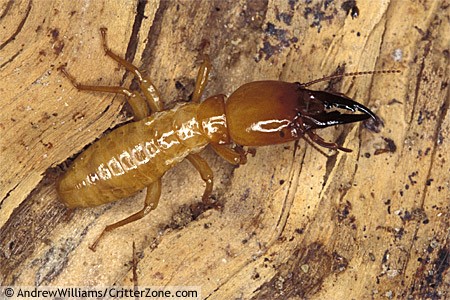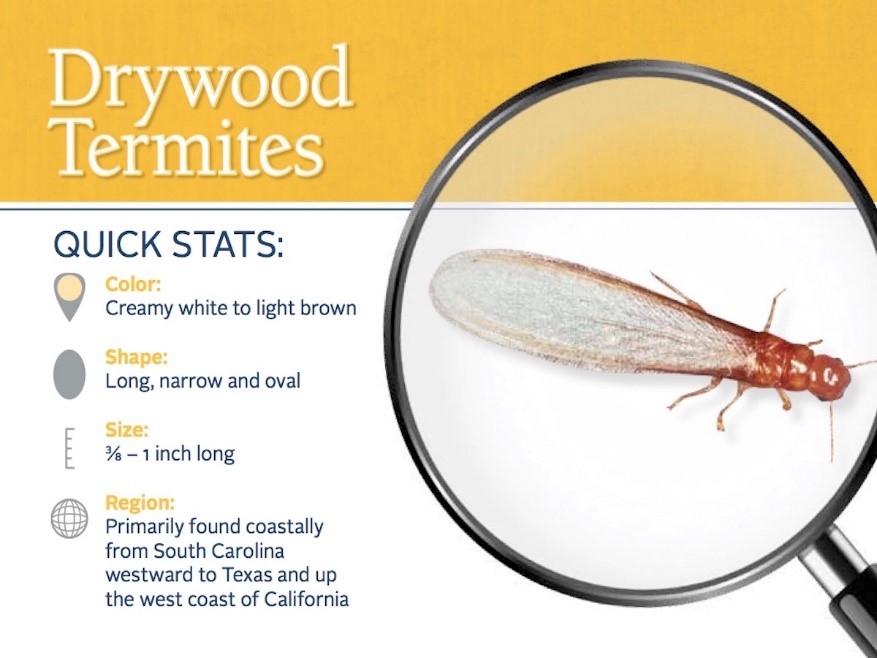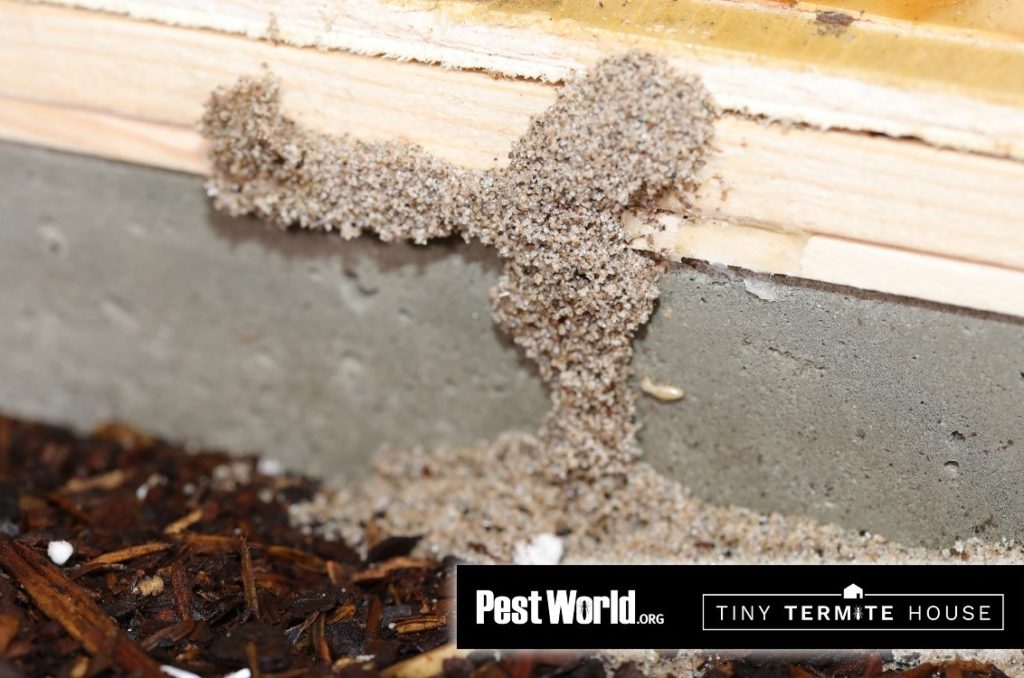
Termites are the most feared household pest that homeowners in California have to contend with every year. They are especially dangerous because dampwood termites, drywood termites, and subterranean termites feed on wood all day, every day. Damage can be severe when they attack the structural integrity of your home. According to the National Pest Management Association, termites cause more than $5 billion in property damage each year – an expense typically not covered by homeowners insurance.
Termites fulfill an important role in our ecological system by speeding up the natural process of decay and help turn the dead wood into new soil. Unfortunately, termites can’t tell the difference between a stump in your yard and the wood in your home. Termites live in social colonies, typically found in the soil. While they are generally found foraging underground for fallen wood, or plant debris, they can also enter homes causing extensive damage if left untreated.
What kind of termites are in California?
Dampwood Termites

Dampwood termites are distributed throughout California. However, because they thrive in high moisture areas, they are found in large concentrations in locations which are cool and humid, like those near the coast. They feed mostly on decayed wood which are kept moist either because of their contact with the soil or because they are exposed to water leaks. These termites open galleries within the wood, which serves both as their home and food. If they are detected on your property, that can be seen as a sign that there is a moisture problem in your home or in the wooden structures in it.
Drywood Termites

With the exception of one species, all types of drywood termites feast on dry wood. These may include furniture, structural lumber, decks, fences, utility poles and even stored lumber. Most often we will find them in attics or basements. Once a colony has established itself, it sends out winged reproductive swarms to attack wood found nearby and expand the colony.
These termites are commonly found in Northern California, thriving in the dry areas. However, some colonies have also been found in the Central Valley areas. In these areas, the termites perch their nests above ground, far from the soil. Like dampwood termites, drywood termites leave a characteristic pattern consisting of chambers and tunnels when they infest a wooden structure. Often, they leave fecal pellets which the termite expel through the surface which is a good way to identify that you may have a termite problem.
Subterranean Termites

Subterranean termites are distributed across the state of California, commonly found among tree stumps and dead wood that have come into contact with the soil. They may also infest structural lumber in homes. Although there are several species of termites labeled as subterranean termites, the most important among these are those that belong to the genera Reticulitermes, Heterotermes and Coptotermes. These types of termites have a unique pattern building vertical tunnels of shredded particles.
Among these three genera, the Reticulitermes can be found in practically all areas in the state. They are also the most destructive termites. Although they are relatively small, they compensate for this with colonies that number hundreds of thousands.
How can I tell if I have termites in my home?
Subterranean termites are common structure infesting pests that live within the soil, hence the name “subterranean”. They are often detected by their reproductive “swarming” behavior that can take place throughout the year, differentiated by the type of termite. Swarmers (reproductive termites with wings) will be a dark brown or black. When indoors, they tend to fly towards light, so you may find their small tear-drop shaped wings near windows or light sources. Worker termites are a creamy white color and are rarely seen due to their sensitivity to light and air flow.
If you suspect that you have a termite infestation in your home, look out for the following.
- Mud tubes up against walls (not on the ground) on the exterior of the home.
- Soft wood indoors that sounds hollow when tapped.
- Darkening or blistering of wood structures.
- Bubbling or cracked wall paint.
- Small piles of wood shavings around your home. These are termite feces.
- Piles of small, delicate wings near doors or on windowsills, indicating swarmers have entered the home or swarmers themselves, which are often mistaken for flying ants.
One unique characteristic of subterranean termite activity are “mud tubes”. These pathways are constructed by termites to protect themselves from the elements during travel. Termites feed on wood within large colonies, which can result in severe damage to your home.
Termites are typically attracted to:
- Under wood flooring
- Ceilings
- Roof beams
- Under roof shingles
- Insulation
- And more!
What attracts termites to my home?
Termites are a common occurrence in nature and are constantly in search of new food sources. Subterranean worker termites travel around your property, looking for fallen trees, decaying wood, plant debris, and other cellulose materials to consume and bring back to the colony. It is not uncommon to find termites in mulch or a nearby wood pile around your home. Improper moisture control, leaf litter, and direct wood-to-soil contact are all prime conditions that can promote termite activity on your property – often times within close proximity to your home. While foraging, worker termites will enter cracks on the exterior of your home, ultimately leading them to the wood within the structure.
Are termites dangerous?
Termites aren’t aggressive and won’t bite you or your pets. For that reason, they aren’t dangerous to your health in terms of potential bites or stings. They are attracted to wood and can cause severe structural damage to humanmade buildings like residential homes.
Termites thrive in dark, moist conditions and feed primarily on wood or other cellulose material. Termite workers constantly forage for new food sources both in ground and above ground. They are known to enter buildings through cracks in concrete flooring and walls. When left undetected, termites can cause significant damage to your structure.
How can I protect my home from termites?
Remove as much moisture from your home, focusing on the crawl space. This means repairing leaky pipes and faucets, addressing water damage, and using a dehumidifier. Trim back plants that come into contact with your home. Move wood piles far away from your home. When living outdoors, termites gravitate towards wood piles among other wood such as fallen logs. Take a walk around the exterior of your home. Are there visible cracks or gaps? Seal them up to prevent unwanted entry points.
What Are Termites Professional Pest Control Services in Tracy CA?
Serving Northern California
